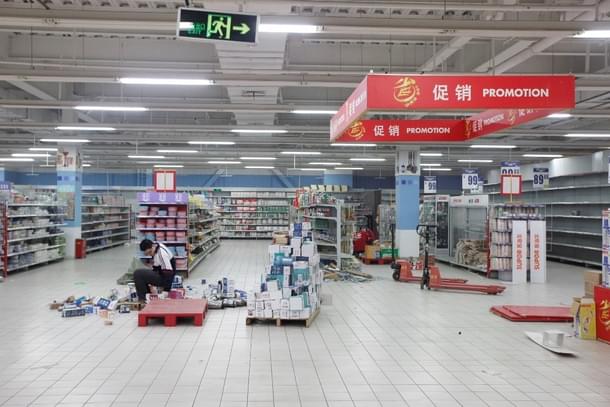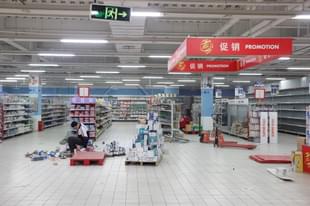Economy
In A First, China May Cut Taxes To Boost Domestic Demand As Export-Led Growth Shows Signs Of Slowing
Akshay Surana
Oct 29, 2018, 01:13 PM | Updated 01:13 PM IST
Save & read from anywhere!
Bookmark stories for easy access on any device or the Swarajya app.


Although India escaped the derisive ‘Hindu Rate of Growth’ (slow growth rate) and marched into the globalised world with renewed vigour in the nineties, its achievements since then, have been seldom acknowledged across the world. Not that India was disliked by the West, but because China hogged all the attention of the world. What India (or any other developing country) could do, China could do it faster, bigger and better, and it did. For decades, China was the fastest growing country in the world. Sustaining high growth rates for such long periods was deemed impossible. But China proved the sceptics wrong.
How did China achieve such impossible feats? More luck than design. When communist China started opening its markets to multinational companies in the eighties, the technology industry was rapidly gaining in strength, and the third wave of globalisation was materialising. By the nineties, Cold War had ended, and consumerism was in full swing. Corporations wanted to produce more at cheaper prices and make astronomical profits. China, with its low labour costs and welcoming Special Economic Zones (SEZs) which provided the necessary ecosystem benefits, became an important manufacturing destination. The Oriental nation became the ‘factory of the world’.
Thus, the Chinese boom was fuelled by exports of all kinds of products to all kinds of nations in the world. The export surplus that it achieved in the nineties kept widening. This export-led economy enabled China to bring millions of its citizens out of poverty. With exports bringing in almost-unlimited foreign reserves which paid for the burgeoning middle class and state finances, China’s domestic demand for the goods it produced, was not necessary for its growth engine to keep running.
However, like the proverbial infinite machine that could run forever without any external force, Chinese economy could not forever depend on the outside world to fuel its ambitions. It needed to boost domestic consumption to substitute for the falling global demand for its exports. Though cracks were already visible in the aftermath of the 2008 financial crisis when the developed world was in the grip of recession, the Chinese export-machine still chugged along. It started dumping its excess capacity in developing countries like India. But in the last 10 years, the world dynamics have changed dramatically.
Leaders like US President Donald Trump are ferociously attacking the Chinese way of doing things, and they want Xi Jinping, the President-for-life of China, to stay away from unfair trade practices. Other regions like South-East Asia and countries like Japan, India and Australia are becoming wary of the aggressive Chinese posturing. In this context, the recent developments are telling.
The Chinese state-run news agency, Xinhua, has recently reported that Chinese authorities have announced a draft plan that aims to provide special additional deductions to incomes of taxpayers. The draft version is in the public domain, and the concerned parties can respond with suggestions and questions for the next two weeks.
According to the Ministry of Finance and the State Taxation Administration, “The temporary deduction rules were made under the principles of being fair and reasonable, simple and easy to implement, effectively reducing burdens of the people, and improving their lives.” Individual taxpayers will be able to avail benefits under the following tax heads - for children's education, continuing education, treatment for serious diseases, caring for the elderly, as well as housing loan interests and rents.
In fact, this is the second time in less than a year that the Chinese government has introduced reforms in taxation. It raised the threshold for personal income tax exemption from 3,500 yuan to 5,000 yuan per month or 60,000 yuan per year.
People, in general, and if given a chance, would like to pay as little tax as possible. This isn’t wrong per se because people sometimes better know what to do with their hard-earned money than some government official sitting in an ivory tower. Instead of governments deciding where to invest the tax money, tax deductions allow millions of taxpayers to individually decide on how and when to spend the extra money they have now because of reduced tax payments. This will raise consumer demand and to meet this demand, suppliers will focus on the domestic markets instead of diverting their production to other countries. In such scenarios, domestic markets become more lucrative for companies. Thus, the Chinese authorities can justify the one-party rule by promising continued economic prosperity for its citizens. But this time around, growth will come from Chinese citizens themselves.
Though all of this looks good and forward-looking public policy, it also points towards issues affecting Chinese society and the economy. Governments routinely use tax deductions all over the world for both genuine economic reasons and also to improve electoral prospects. But the numerous changes brought about by China in a short period point towards the growing anxieties within and outside the country about its future.
In that respect, it is essential to contrast China’s growth trajectory with that of India’s since the nineties. Though India tried to emulate the Chinese model of maximising exports like setting up of SEZs, it never quite achieved the scale comparable to that of China. Differences in the political systems of the two countries also played a significant role. While in China with its one-party rule, it’s easier to implement large-scale public projects and scuttle opposition to them, in India with its diversity and democracy, big projects get stuck in political struggles and bureaucratic hurdles.
But India has one big advantage over its neighbour. Even though a big current account deficit casts a long shadow over the country’s economic prospects, the fact that India’s economy is domestic demand-driven is a silver lining. Unlike China, Indian has a ready-made market for all sorts of consumer goods, from sachet-shampoos to electric cars. Thus, it is less vulnerable to external shocks and allows for more sustainable growth in the future.





